Investors in the royalty & streaming sector, most notably in precious metals, are well versed in the business model. Giants like Franco-Nevada and Wheaton Precious Metals trade at premium earnings multiples. Both have market caps above $30 billion and have enjoyed strong share price appreciation (+78% / +150%, from 52-wk lows).
Readers may have noticed a dozen or more new royalty / streaming companies hitting the market this year. Competition for transactions on high-quality gold & silver projects or mines in safe, low-cost, prolific jurisdictions is soaring. At the same time, precious metal prices are near all-time highs, adding more fuel to the valuation fire.
Surprisingly, very few players are focusing entirely on battery / high-tech, green-energy metals like copper, nickel, lithium, cobalt & manganese. For a variety of reasons, some of these metals are not amenable to royalty & streaming activities. However, copper & nickel are thought to be well placed in this regard.
Why copper & nickel above the others? To find out, I spoke with Alex Tsukernik, CEO of newly-listed Nova Royalty Corp. (TSX-V: NOVR) / (OTCQX: NOVRF).
Expert consultant groups including; Roskill, S&P Global Market Intelligence, CRU Group, Argus… — mostly agree that both copper & nickel demand will grow at a faster annual rate in the 2020’s then they did in the 2010s, and possibly faster still in the 2030s. Yet, global supply growth to meet demand is a huge question mark.
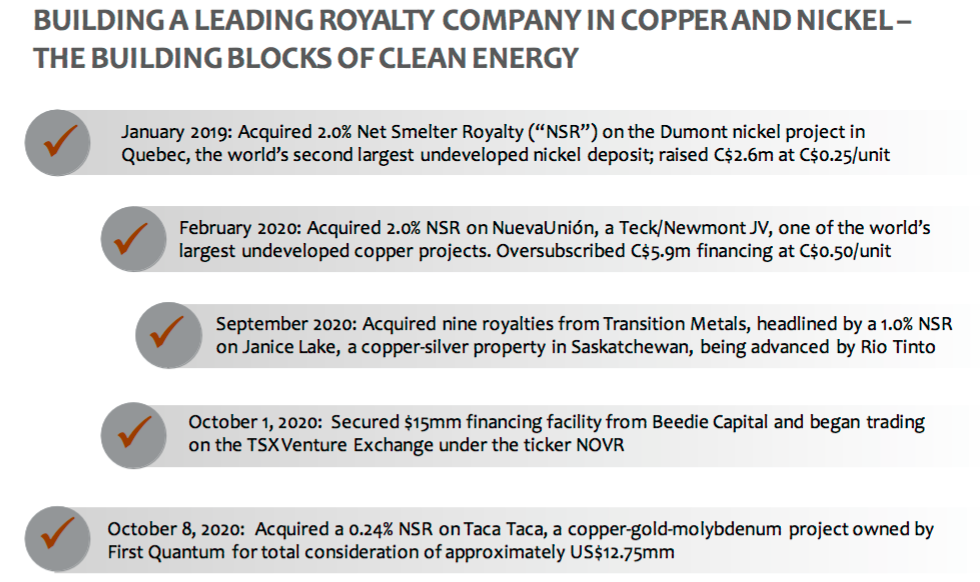
If copper & nickel prices increase significantly in coming years, as I think they will, Nova Royalty’s long-lived assets could become considerably more valuable. Please continue reading to learn a lot about copper, nickel & Nova Royalty Corp.
Can we get a brief history of Nova Royalty?
Yes, of course. We started Nova Royalty two years ago to create a royalty company focused on the most critical, supply-constrained portions of the electrification supply chain. We found copper & nickel mines to be the best places to focus, and have completed 3 major acquisitions.
Our project owners include Teck, Newmont and Rio Tinto – some of the world’s largest mining companies – all investing significant capital into projects that we own royalties on. Nova listed on the TSX-V on October 1st, and we announced a $15M financing facility from Beedie Capital to help finance growth. Our market cap is ~C$70M.
Why focus on just two battery / green-tech metals (copper & nickel)? What about lithium, cobalt, graphite, manganese or vanadium?
We believe copper & nickel are the most compelling battery metals for two main reasons:
Mass adoption: Copper is the world’s largest industrial metal market and the biggest beneficiary of electrification & decarbonization around the world. It’s the heir to oil as the world’s primary energy commodity.
Copper is the key ingredient in wind & solar farms, EV charging infrastructure and the EV itself. Renewable energy assets can require up to 15x more copper compared to conventional power sources. EVs require up to 10x more copper than Internal Combustion Engine (“ICE”) vehicles.

Nickel is a critical element in EV batteries, with the two most common battery types, NMC & NCA at ~80% nickel by mass. Global automakers have, almost in unison, embraced nickel-heavy batteries. While the battery race is still evolving, it’s hard to see an EV industry without nickel playing a major role.
We have yet to see graphite, manganese & vanadium achieve anything close to mass penetration, which is why we stay away from those commodities. We like scalable commodities around which we can build a consistent strategy, not bespoke one-off transactions. There’s a big gap between having a technology and gaining a sustainable foothold in the industry’s infrastructure.
Lithium does have mass adoption, but lithium miners have little pricing power and are (at this stage) missing out on the major rewards of electrification.
Supply chain pricing power sits with miners: For both copper & nickel, most of the value in the supply chain stays with the miners. That makes royalties on copper & nickel assets highly attractive. Royalties give us rights to revenue (before costs) and free optionality on exploration successes & production expansions – which are almost certain with large, globally significant deposits that can operate for > 50 years.
That’s not the case with lithium. Most of the value in the lithium supply chain is captured by processors that refine the mined lithium into finished products. There’s an abundance of mined lithium, which removes the long-term price support from that market.
By contrast, copper & nickel supply is naturally constrained at current prices, with timelines & capital cost for new projects progressively increasing. We have acquired royalties on some of the largest, most strategic projects in the global copper/nickel pipeline – we believe these projects will become a priority sooner rather than later.
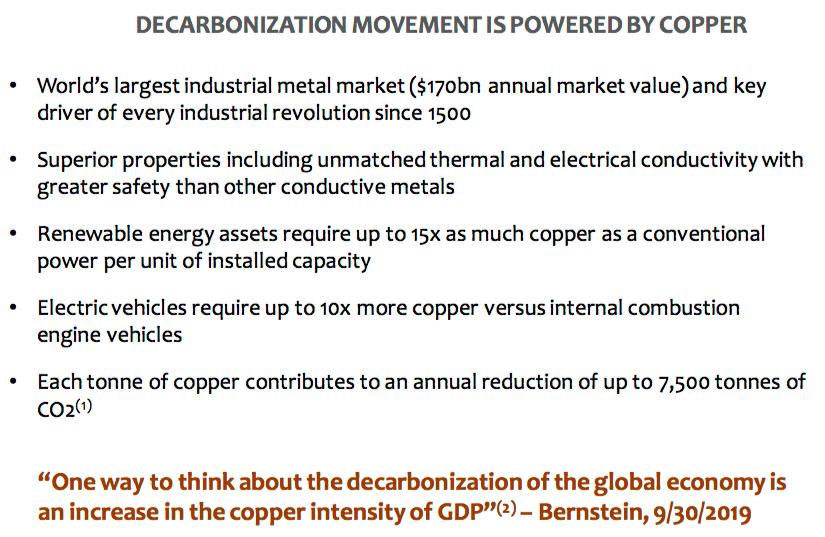
Focused royalty companies command investor attention and premium valuations: The purpose of public royalty companies is to give investors a better way to invest in a theme – and the commodities that drive that theme. We have seen this with precious metal royalty companies focusing on gold / silver. Copper / nickel are the gold / silver of electrification.
We’re seeing a generational shift in how we live, and the massive energy transition is at the tip of the spear of that change. Royalties are the best way to participate in this energy transition – especially royalties in some of the largest, most strategic assets in the world.
Are there mining jurisdictions that Nova is especially bullish on? Are there popular destinations that Nova is bearish on?
Most of our activity is in the Americas & Australia. Our current portfolio contains 14 royalties, 13 in Canada, one in Chile, and we just announced an acquisition of a world-class asset in Argentina. We will not invest in jurisdictions that do not have a consistent approach to successfully integrating the mining industry into their broader society.
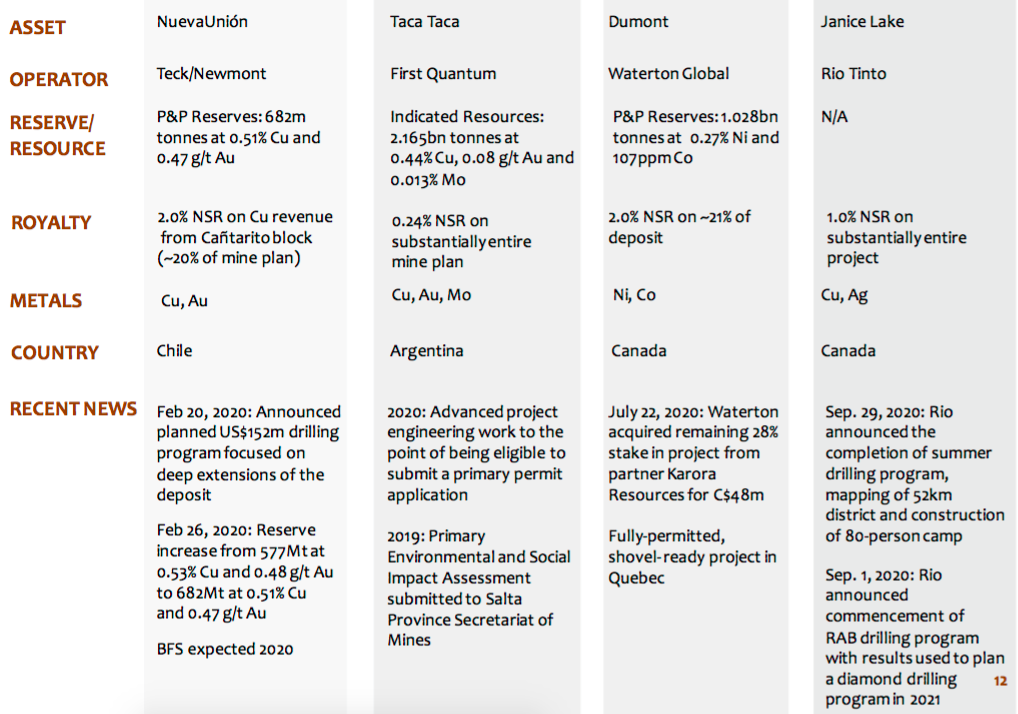
Miners have struggled with social license, especially recently. Hence, our primary focus on making sure that the deposits we invest in have good reasons to be supported by their communities and local / federal governments.
Please describe to readers Nova’s bull case on copper.
Copper is the key ingredient in decarbonizing the world. As mentioned, everything from renewable energy assets to the EVs themselves will require a multiple of the copper that’s currently being consumed.
For the industry to meet demand, supply growth has to dramatically increase from the roughly 1%/yr. we’ve been seeing. The price of copper needs to rise to incentivize companies to invest billions on new projects years, before first production. It takes decades to advance a major project from exploration to production and operational challenges are not getting any easier.
From what we’ve seen, risks across the spectrum (technical, social, environmental, financial, political) are only rising. It’s hard to see a future copper industry at today’s $3/lb. Very few projects can justify new investments at this price level.
Please describe to readers Nova’s bull case on nickel.
As of now there’s no EV industry without nickel. In particular, Class 1 nickel, from jurisdictions with sustainable production standards. By 2040, Bloomberg estimates 58% of car sales will be EVs. That will require an annual Class 1 nickel supply that’s a multiple of today’s volumes. Massive copper projects are challenging to bring online. Nickel projects are even more challenging.
Given the amount of new supply required and prior operational challenges – the battery-grade nickel space needs to find a new, economically sensible price floor. The nickel price still largely reflects the dominance of stainless steel. We believe that will change in coming years.
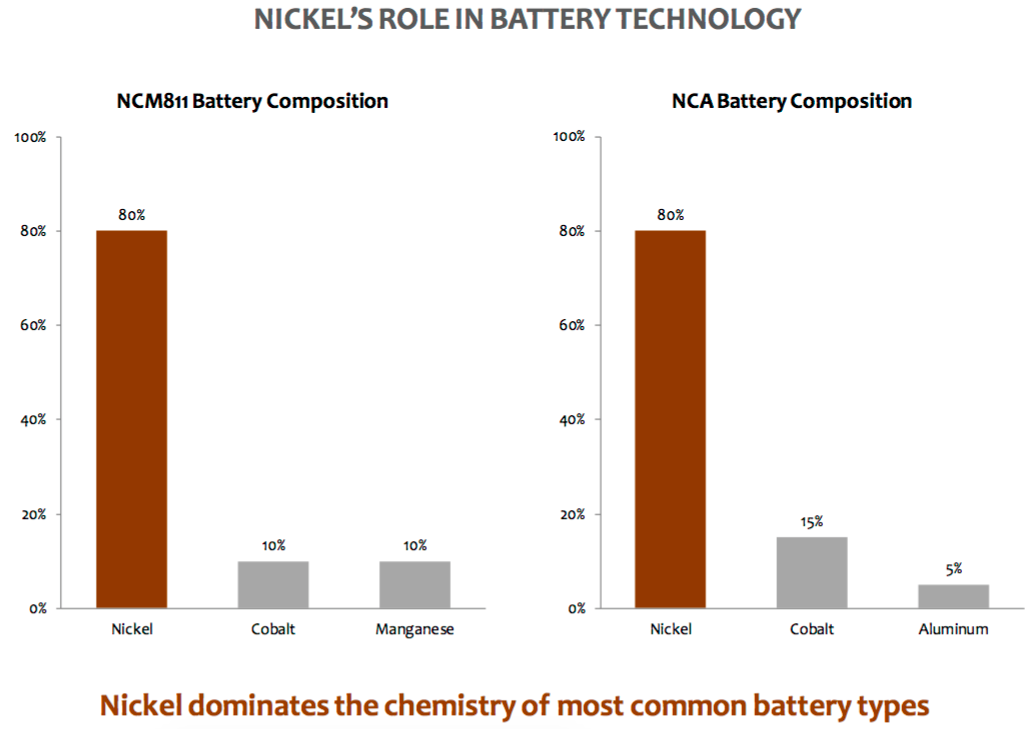
Please tell us about your most important assets.
Every major transaction that we have done has focused on an asset that’s either already, or has the potential to be, globally significant in copper or nickel.
NuevaUnion: A 50/50 JV between Teck Resources & Newmont in Chile, one of the world’s largest copper development projects. Teck has been highly successful in developing mines in Chile. Newmont understands copper/gold porphyries very well.
We own a 2.0% Net Smelter Royalty (“NSR”) on ~20% of the La Fortuna deposit, already > 1 billion tonnes of resources. Two days after our acquisition of this NSR, in February 2020, it was announced that Teck & Newmont are planning a $152M drill program.
Although our royalty applies only to copper revenue, which comprise a majority of the project’s economics, the precious metals component and the presence of Newmont, are definite pluses in advancing this world-class project. To the extent possible, it’s beneficial to have multiple revenue streams to manage volatility and keep mine projects moving toward production.
Taca Taca: On October 8th we announced the acquisition of a 0.24% NSR on the Taca Taca project in Argentina, one of the world’s largest copper development projects. It has > 13 million tonnes (28.7 billion pounds!) of contained copper + gold & molybdenum credits. First Quantum is the operator. Escondida, located on the other side of the Chile-Argentina border, is only ~90 km away.
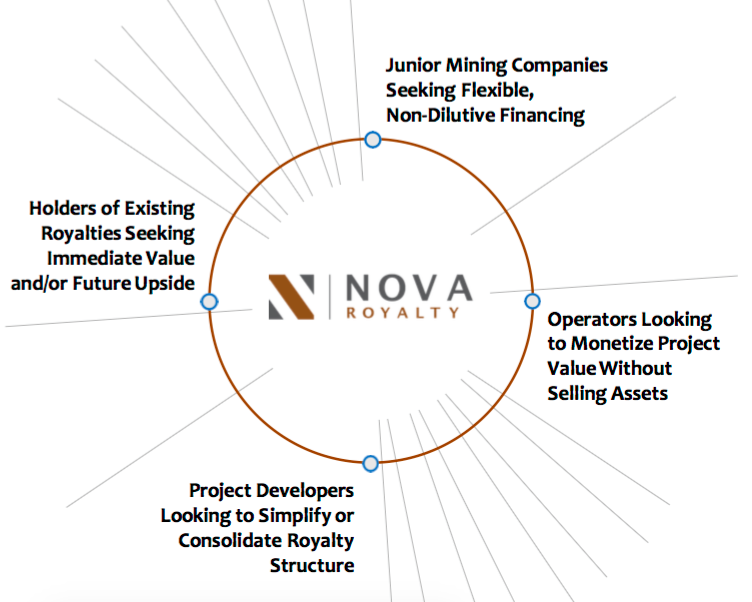
Dumont: We own a 2.0% NSR on ~21% of the Dumont nickel-cobalt project in Quebec. Dumont hosts the world’s 2nd largest nickel resource, it’s fully permitted, and it’s in a very supportive mining jurisdiction. Dumont is 100%-owned by private equity fund Waterton Global Resource Management, which recently bought ab additional 28% of the Project, giving it 79% ownership. We’re confident the asset is in strong hands and in prime position to be developed.
Janice Lake: We own a 1.0% NSR on the Janice Lake copper-silver project in Saskatchewan being advanced by Rio Tinto. Rio has completed its Stage 1 earn-in requirements well ahead of time, has built an 80-person camp, and just completed their summer exploration program. Like Dumont, Janice Lake is in a great jurisdiction, near key regional infrastructure.
The deposit has an 8 km strike length and displays several large zones of mineralization, open in all directions. It’s rare to see a major company pursuing an exploration project with such clear intent.
We understand Rio is planning a diamond drilling program in 2021 after doing rotary drilling this summer. We’re keen to see drill results in the next few months. We also own a 1.0% NSR on the Wollaston project, located ~40 km away and on trend, from Janice Lake.
Thank you Alex, I will leave it there — four globally significant assets, operated by mining giants like Teck, Newmont, First Quantum, Rio Tinto — Nova Royalty seems to be in the right place at the right time in the right commodities (nickel + copper).
Disclosures / disclaimers: The content of this interview is for information only. Readers fully understand and agree that nothing contained herein, written by Peter Epstein of Epstein Research [ER], (together, [ER]) about Nova Royalty Corp., including but not limited to, commentary, opinions, views, assumptions, reported facts, calculations, etc. is to be considered implicit or explicit investment advice. Nothing contained herein is a recommendation or solicitation to buy or sell any security. [ER] is not responsible for investment actions taken by the reader. [ER] has never been, and is not currently, a registered or licensed financial advisor or broker/dealer, investment advisor, stockbroker, trader, money manager, compliance or legal officer, and does not perform market making activities. [ER] is not directly employed by any company, group, organization, party or person. The shares of Nova Royalty Corp. are highly speculative, not suitable for all investors. Readers understand and agree that investments in small cap stocks can result in a 100% loss of invested funds. It is assumed and agreed upon by readers that they will consult with their own licensed or registered financial advisors before making any investment decisions.
At the time this article was posted, Peter Epstein owned no stock, options or warrants in Nova Royalty Corp, and the Company was an advertiser on [ER].
While the author believes he’s diligent in screening out companies that, for any reasons whatsoever, are unattractive investment opportunities, he cannot guarantee that his efforts will (or have been) successful. [ER] is not responsible for any perceived, or actual, errors including, but not limited to, commentary, opinions, views, assumptions, reported facts & financial calculations, or for the completeness of this article or future content. [ER] is not expected or required to subsequently follow or cover any specific events or news, or write about any particular company or topic. [ER] is not an expert in any company, industry sector or investment topic.
![Epstein Research [ER]](http://EpsteinResearch.com/wp-content/uploads/2015/03/logo-ER.jpg)





